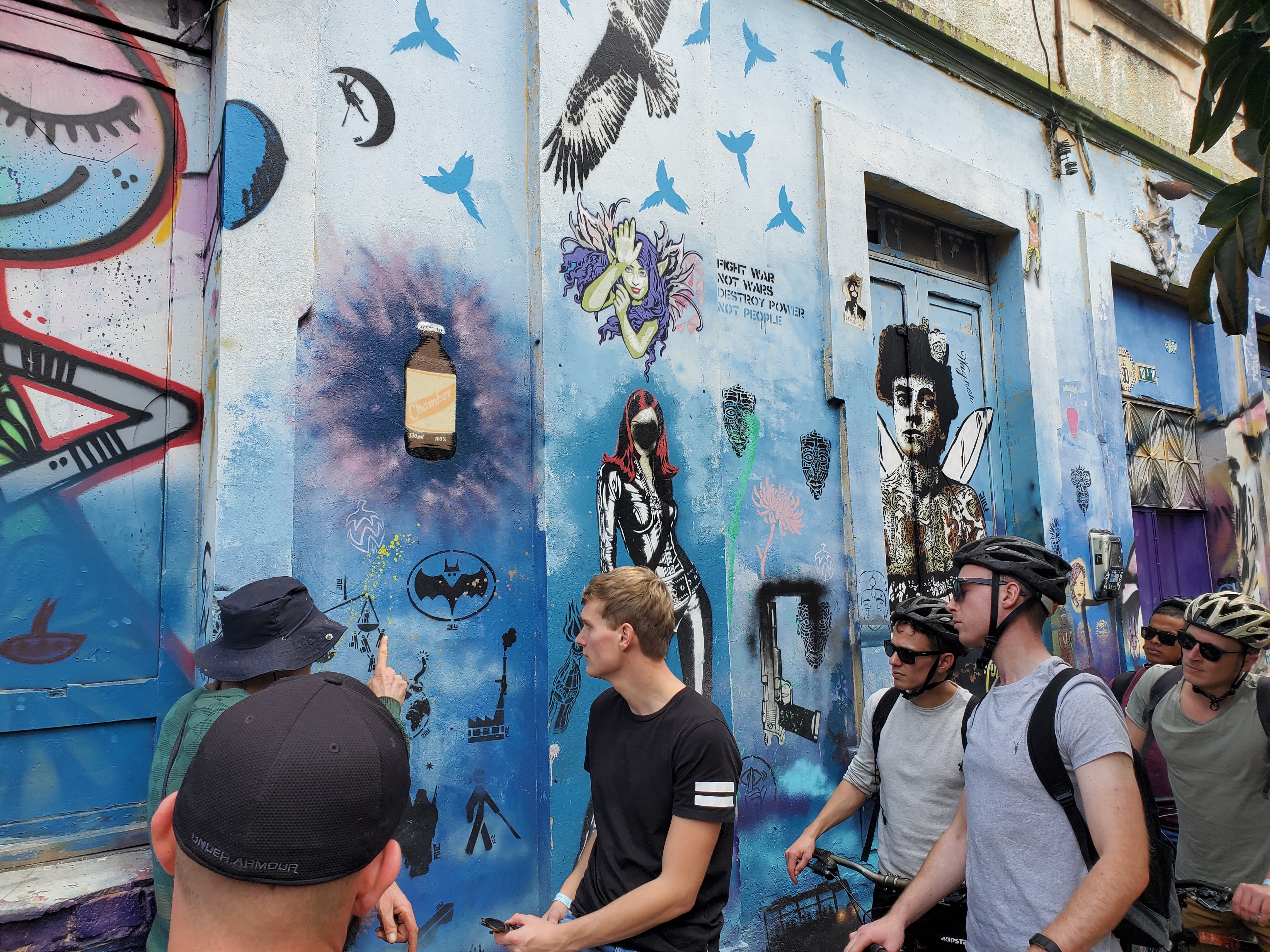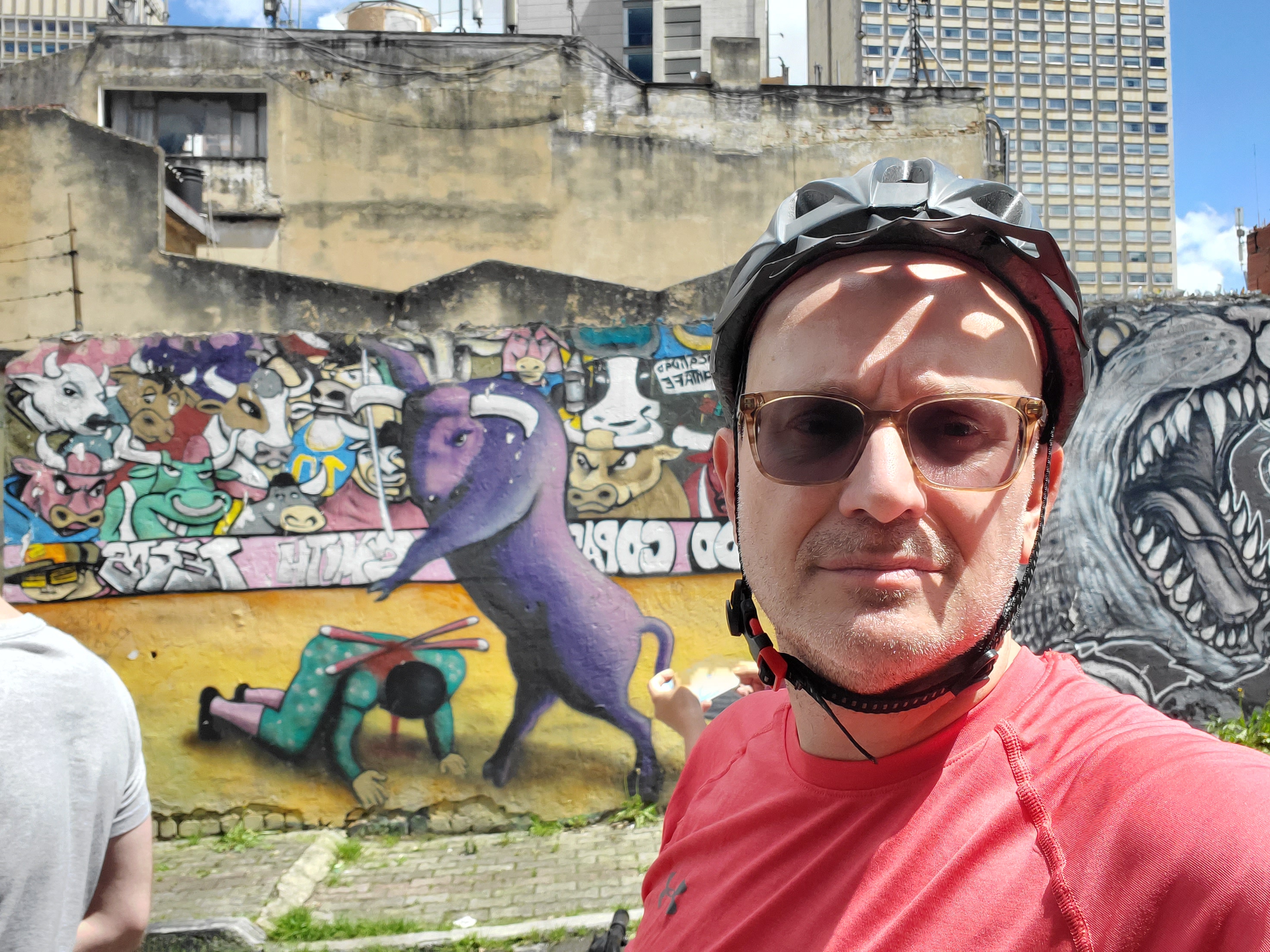
Colombians were justifiably beside themselves when one of their own, Egan Bernal, won last year’s Tour de France. In the iconic cycling race dominated for decades by the Belgians, Spanish, Italians and, yes, the French, Bernal was the first Latin American to win the 2,200-mile (3,500 kilometers) race.
But Bernal’s victory should hardly be a surprise. Colombia has a proud legacy of cyclists, with names like Winner Anacona, Esteban Chaves, Fernando Gaviria, Nairo Quintana and Rigoberto Urán.
That legacy is one reason the country has emerged as a cycling tourism destination — and once the planet can move beyond this pandemic, Colombia and its citizens will welcome more visitors to its cities’ streets and rural roads.
As of press time, Colombia still has strict controls in place for international visitors. But at some point, whether a vaccine scales up worldwide (or the virus “miraculously” disappears) cities and towns across the country will be eager to welcome tourists back en masse — and visitors will be glad they arrived.

Anyone planning a cycling trip around Colombia can launch where most visitors land: the country’s capital, Bogotá. From there, more options for exploring Colombia’s cycling heritage await, such as in the coffee-growing regions of Valle de Cauca and Caldas, as well as along the Caribbean coast from cities such as Santa Marta.
Much of Colombia is a natural for cycling
That heritage comes from the fact that many Colombians have long been obsessed with cycling. Some of this comes from the realities of life in the cities. Bogotá and Medellín are among the Colombian cities that have closed major roads on Sundays for years, in part to combat those urban areas’ stubborn air pollution. The success of those car-free days, or ciclovía, have helped inspire other cities like Los Angeles to launch their own version of days dedicated to closing streets to cars and opening them to residents to do what they wish: cycling, pushing a stroller, roller skating or walking.
Blogger Chris Bell best summed up why Colombia has such a rich cycling history and culture:
“If the cycling gods could have designed their own country, it would likely look something like Colombia, a country where the Andes mountains split into three huge ranges, making for a nation of epic uphills and dramatic downhills. Throw in high-altitudes and long-distances, and you have a recipe for some truly amazing — and challenging — cycling. This perfect mixture means that Colombia has produced more than its fair share of world-class cyclists over the years.”
Naturally, tour operators have offered trips that involve experiencing Colombia via cycling for all or part of a travel itinerary through this country home to 50 million people, including G Adventures, Intrepid and REI Adventures.

But if an itinerary of cycling day after day isn’t how you envision a vacation, consider a day tour in one of Colombia’s jam-packed cities or somewhere within the country’s stellar countryside. And when hopping on a bicycle, you will also most likely score a window viewing sustainable development and tourism efforts underway across Colombia.
A capital experience: Learning about Colombia’s proud and volatile history on two wheels
At a first glance, Bogotá seems to the last place anyone would want to cycle. Home to 7.4 million people, the city’s grit and congestion may make one think of Guns N’ Roses' 1987 classic, “Welcome to the [Urban] Jungle.” One’s first impression may be to stick to a taxi and dive into the city’s dining life and vibrant restaurant scene. But you’ll have to burn off those calories eventually, and a half-day cycling tour should do the trick.
At first pedal, you might ask yourself what on earth you were thinking — the city is 8,660 feet (2,640 meters) above sea level, making what seems like a brisk walk feel like the final mile of a marathon to those unaccustomed to being at such a high elevation.

But 40 years after that first ciclovía, Bogotá has an impressive network of about 225 miles (362 kilometers) of bike lanes, depending on the source consulted. And for the most part, these bicycle lanes are fairly distributed across the city. Colombia has long struggled with income inequality, but at least on this metric, Bogotá’s residents largely have unfettered access to city streets if they seek an alternative to driving or the city’s chaotic public transportation system.
Most visitors, however, will want to base a bicycle tour in Bogotá’s La Candelaria district, a historic neighborhood that lies at the base of Monserrate, the 10,000-foot-high peak that can be seen from most of the city. A bicycle tour here will offer a peek at the main square, Plaza Bolívar, countless museums, and an array of architectural styles that include Art Deco, Baroque and Spanish Colonial.
But such a tour also gives you a window into the small businesses and activities that define life in Bogotá for many residents, opportunities you may not have if you venture on your own or are on a conventional tour bus. There is the chance to venture into one of the city’s produce markets, where fruits like lulo or tomate de arbol (tree tomato) are on offer — some of which are the result of efforts in Colombia to scale up more sustainable and climate-smart agriculture.

Or, you may have the chance to play tejo, a popular pastime that involves tossing a heavy metal ball (the tejo) into ring laid with mechas, small tabs filled with gunpowder — if you hit a mecha, you score points and can take a swig of local beer like Poker or Aguila (and everyone else in the tejo hall will join you!). Depending on the tour you book, you’ll be able to check out the city’s thriving public art scene or social experiments such as the city’s “Tolerance Zone.”
Bottom line: Booking a bike tour ensures you’re supporting a local business. One such tour company, Bogotá Bike Tours, employs several locals and offers tours twice a day for 45,000 pesos (US$12) — and according to the latest update is still doing so while Colombia is under quarantine.
Coming soon: Cycling in Colombia’s second largest city, Medellín.
Image credits: Leon Kaye


Leon Kaye has written for 3p since 2010 and become executive editor in 2018. His previous work includes writing for the Guardian as well as other online and print publications. In addition, he's worked in sales executive roles within technology and financial research companies, as well as for a public relations firm, for which he consulted with one of the globe’s leading sustainability initiatives. Currently living in Central California, he’s traveled to 70-plus countries and has lived and worked in South Korea, the United Arab Emirates and Uruguay.
Leon’s an alum of Fresno State, the University of Maryland, Baltimore County and the University of Southern California's Marshall Business School. He enjoys traveling abroad as well as exploring California’s Central Coast and the Sierra Nevadas.














